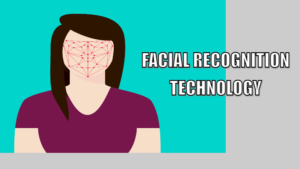FACIAL RECOGNITION TECHNOLOGY(FRT) -ASTR

Recently, Department of Telecommunications (DoT), Ministry of Communications has developed an artificial-intelligence (AI)-based facial recognition tool — called Artificial Intelligence and Facial Recognition powered Solution for Telecom SIM Subscriber Verification (ASTR).
More on news
- ASTR, launched under Sanchar Saathi Initiative, is an AI powered tool to identify SIMs issued using fraudulent/forged documents.
o ASTR has capability of running checks on subscriber databases of telecom operators to deduce whether it contains multiple connections associated with the same person.
- ASTR identifies if more than eight SIM connections have been obtained in one person’s name, which is not allowed as per DoT rules.
- In 2012, DoT had issued an order to all telecom operators to share their subscriber database including pictures of users with the department.
- ASTR analyses this database subscriber images provided by telecom operators and put them into groups of similar-looking images using Facial Recognition Technology (FRT).
About Sanchar Saathi Portal
- Sanchar Saathi helps citizens to know the mobile connections issued in their name; report fraudulent or unrequired connections; block mobile phones which are stolen/lost and check IMEI genuineness before buying a mobile phone.
- It contains various modules like
- CEIR (Central Equipment Identity Register): For blocking stolen/lost mobiles.
- Telecom Analytics for Fraud Management and Consumer Protection (TAFCOP): It facilitates a user to check the number of mobile connections taken in her/him name using paper-based documents.
- ASTR: To identify fraudulent subscribers.
- Know your mobile connections: To know mobile connections registered in your name
About Facial Recognition Technology (FRT)
- Facial Recognition Technology (FRT) is a way of identifying or confirming an individual’s identity using their face. It can be used to identify people in photos, videos, or in real-time.
o Computer algorithms map unique facial and marks such as shape of cheekbones, contours of lips etc. and convert these into a numerical code— termed a face print.
✓ It relies on many of the processes and techniques associated with AI.
o for verification or identification, system compares face print generated with a large existing database of face prints.
HOW FACE RECOGNITION SOFTWARE WORKS?
- CAPTURING
![]()
The foremost requirement is to capture the image and that can be done by scanning existing images or using cameras.
- EXTRACTING
![]()
Unique facial data is then extracted from the sample.
- COMPARING
The data is then compared with the database.
- MATCHING
![]()
The software then decides whether the sample matches any picture in database or not
CONCERNS ASSOCIATED WITH THE USE OF FACIAL RECOGNITION TECHNOLOGY (FRT)
- Privacy and Consent: Lack of control over storage, extent, and informed consent with respect to use of facial data by public and private players, resulting in privacy invasion.
- Data protection law: In India, there is absence of Facial Recognition Technology (FRT)- specific regulatory set up and legal framework to govern data protection, storage and use especially in context of personal biometric data.
o Recently, the government also withdrew Personal Data Protection Bill, 2019.
- In-accuracy: Technical errors due to occlusion (a partial or complete obstruction of the image), bad lighting, facial expression, ageing etc. leading to inaccurate identification.
- Under-representation: Errors in Facial Recognition Technology (FRT) occur due to lack of data pertaining to certain groups of people.
o Disparity has been observed in identification of Indian men and women and accuracy rates fall starkly based on race, gender, skin colour etc.
- Technological challenges: Facial Recognition Technology (FRT) is prone to digital attacks or the use of physical or digital portraits, 3D-Models, such as masks or deep-fakes etc. to bypass the system.
APPLICATIONS AND BENEFITS OF FACIAL RECOGNITION TECHNOLOGY
- Fraud detection

Verify the identity of actual person in case of risky or suspicious activity
- Crime investigation

Facilitate crime investigation, identity missing children/persons, unidentified dead bodies and provide information for easier and faster analysis.
- Airport

FRT in form of e-passports reduces wait times and improves security: Digi Yatra
- Banking

ATM cash withdrawals and checkout registers can use facial recognition for approving payment
- Health care

To gain access to patient records and streamline patient registration process in a healthcare facility and auto detect pain and emotion in patients.
Read Article about: Stem Cell create first synthetic human embryo-like structures
Three Parent Baby: Mitochondrial Donation Treatment

